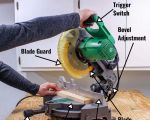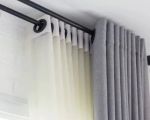- 1. How to Safely Use a Router for Woodworking
- 2. Understanding the Router
- 3. Safety Precautions When Using a Router
- 4. How to Properly Set Up a Router
- 5. Choosing the Right Router Bits
- 6. Common Router Techniques for Woodworking
- 7. Maintaining Your Router
1. How to Safely Use a Router for Woodworking
Woodworking enthusiasts and professionals alike appreciate the versatility of a router. This power tool is used to hollow out (rout) an area in wood, making it an essential part of many woodworking projects. However, with its power and speed, a router can pose risks if not used correctly. Whether you're working on intricate edges or creating grooves, it's crucial to use a router safely to prevent accidents and achieve the best results.
This guide will explore the importance of using a router safely, including the right techniques, proper equipment, and the most common mistakes to avoid. With a few precautions and tips, you can enjoy the benefits of this fantastic tool while minimizing any risks.
2. Understanding the Router
The router is a versatile power tool with a spinning blade that can be used to shape edges, hollow out areas in wood, or cut decorative patterns. There are two primary types of routers: plunge routers and fixed-base routers. Each type has its own advantages depending on the specific task at hand.
2.1 Plunge Router vs. Fixed-Base Router
A plunge router allows you to lower the bit into the wood at any point, making it ideal for creating intricate designs or cutting through the material. A fixed-base router, on the other hand, keeps the bit fixed in place, which is better for edge work or grooves. Knowing the difference will help you choose the right router for your project and improve your efficiency.
2.2 Router Speed and Power
Routers come in various power levels, typically ranging from 1 to 3 horsepower (HP). The more powerful the router, the faster and more efficiently it can cut through dense wood. Additionally, routers have adjustable speed settings, which can be adjusted depending on the material you're working with. Slower speeds are ideal for softer woods, while faster speeds are necessary for harder woods or fine details.
3. Safety Precautions When Using a Router
While routers are powerful tools that can enhance your woodworking projects, they also come with certain risks. Here's a list of essential safety precautions to keep in mind when using a router:
3.1 Wear Proper Protective Gear
Protective gear is crucial when working with a router. Always wear safety glasses or goggles to protect your eyes from wood chips and debris. Additionally, wear ear protection to reduce the noise levels from the router’s high-speed operation. A dust mask can also be beneficial to protect your lungs from fine wood dust.
3.2 Secure Your Material
Before using a router, ensure that your workpiece is securely clamped down to your workbench. This will prevent the material from shifting during the routing process, which can lead to uneven cuts and potential accidents. Always check the stability of your workpiece before starting your routing task.
3.3 Maintain a Firm Grip
When operating the router, always maintain a firm grip on the tool with both hands. This ensures better control over the tool, especially when the router is in motion. Be cautious not to apply excessive force; let the router do the work, and adjust the speed and pressure as necessary for optimal results.
4. How to Properly Set Up a Router
Setting up your router correctly is vital to achieving precise cuts and maintaining safety. Here's a step-by-step guide to properly setting up a router before use:
4.1 Choose the Right Router Bit
Different tasks require different router bits. Whether you're trimming edges, hollowing out areas, or creating intricate patterns, make sure to select the appropriate bit for your project. Router bits come in a variety of shapes and sizes, including straight bits, round-over bits, and edge-cutting bits.
4.2 Adjust the Depth of Cut
Before turning on your router, adjust the depth of cut to match the requirements of your project. If you're making shallow cuts, you can set the router bit to a higher depth. However, for deeper cuts, it’s recommended to make multiple passes rather than attempting to cut all at once, which can strain the motor and lead to uneven results.
4.3 Check the Router Speed
Set the router’s speed according to the material you’re working with. Softer woods, like pine, can be routed at lower speeds, while harder woods, like oak, may require higher speeds. Also, consider the bit size and type, as larger bits often require slower speeds to prevent overheating.
5. Choosing the Right Router Bits
Router bits are available in many shapes and sizes, each designed for a specific purpose. Selecting the correct bit for your project is essential to achieving the desired result. Common types of router bits include:
5.1 Straight Router Bits
Straight bits are ideal for cutting grooves, dadoes, and rabbets in wood. These bits are versatile and can be used for a wide variety of tasks, including edge finishing and joint making.
5.2 Round-Over Router Bits
Round-over bits are used to soften the sharp edges of wood, creating a smooth, rounded edge. They are ideal for adding decorative finishes to furniture, trim, and cabinetry.
5.3 Dovetail Router Bits
Dovetail bits are essential for creating dovetail joints, which are widely used in woodworking for their strength and aesthetic appeal. These bits are designed to create precise, interlocking cuts that fit together perfectly.
6. Common Router Techniques for Woodworking
Once you're familiar with how to use a router safely and how to set it up, it's time to start practicing some basic router techniques. Here are some of the most common techniques for woodworking with a router:
6.1 Edge Finishing
One of the most common uses of a router is for edge finishing. Whether you’re rounding over edges or adding a decorative profile, the router can make smooth, professional-looking edges with ease. Use a round-over or chamfer bit to add a polished finish to the edges of your wood pieces.
6.2 Grooving and Dadoes
Grooves and dadoes are key woodworking techniques used to create channels in wood. A router equipped with a straight bit can easily cut grooves or dadoes for joinery, shelving, and other applications. Ensure that your router is set to the correct depth for clean, precise cuts.
6.3 Template Routing
Template routing involves using a pattern or template to guide the router, allowing you to repeat intricate shapes or designs. This technique is commonly used for making multiple pieces of identical parts or decorative elements.
7. Maintaining Your Router
Proper maintenance is crucial for ensuring your router continues to perform at its best. Regular cleaning, lubrication, and checking for worn-out parts will help extend the life of your router and keep it running smoothly. Here are some essential maintenance tips:
7.1 Cleaning and Lubricating
After each use, clean your router to remove wood dust and debris. Pay special attention to the motor vents and router base. Lubricate the moving parts regularly to prevent wear and tear and to ensure smooth operation.
7.2 Checking the Router Bits
Inspect your router bits regularly for signs of wear or damage. Dull or damaged bits can cause rough cuts and strain the motor. Replace any worn-out bits to maintain the quality of your work.
For more tips and tools for woodworking, visit ToolNest for high-quality routers, bits, and other essential woodworking equipment to help you achieve precision and safety in every project.









